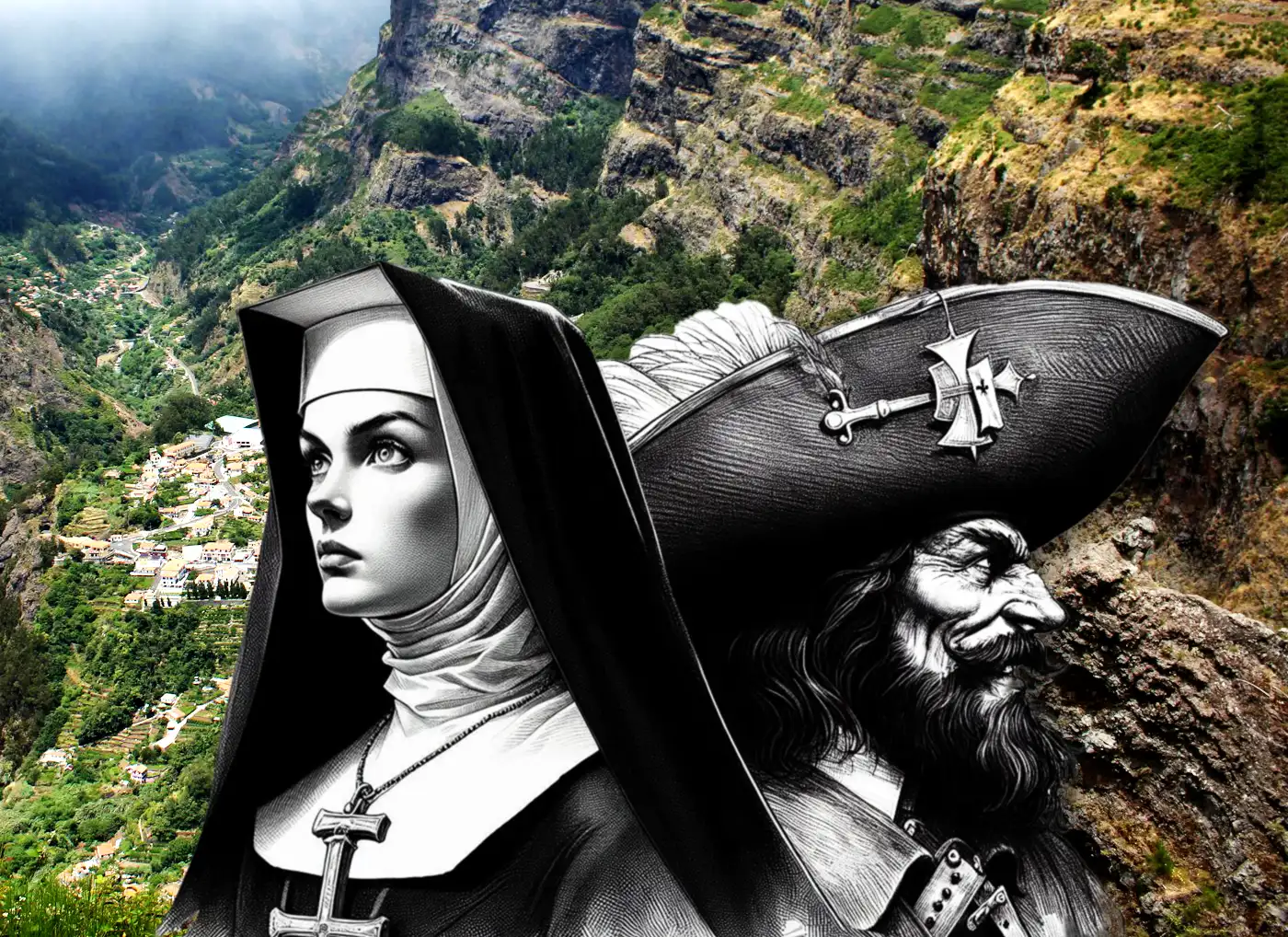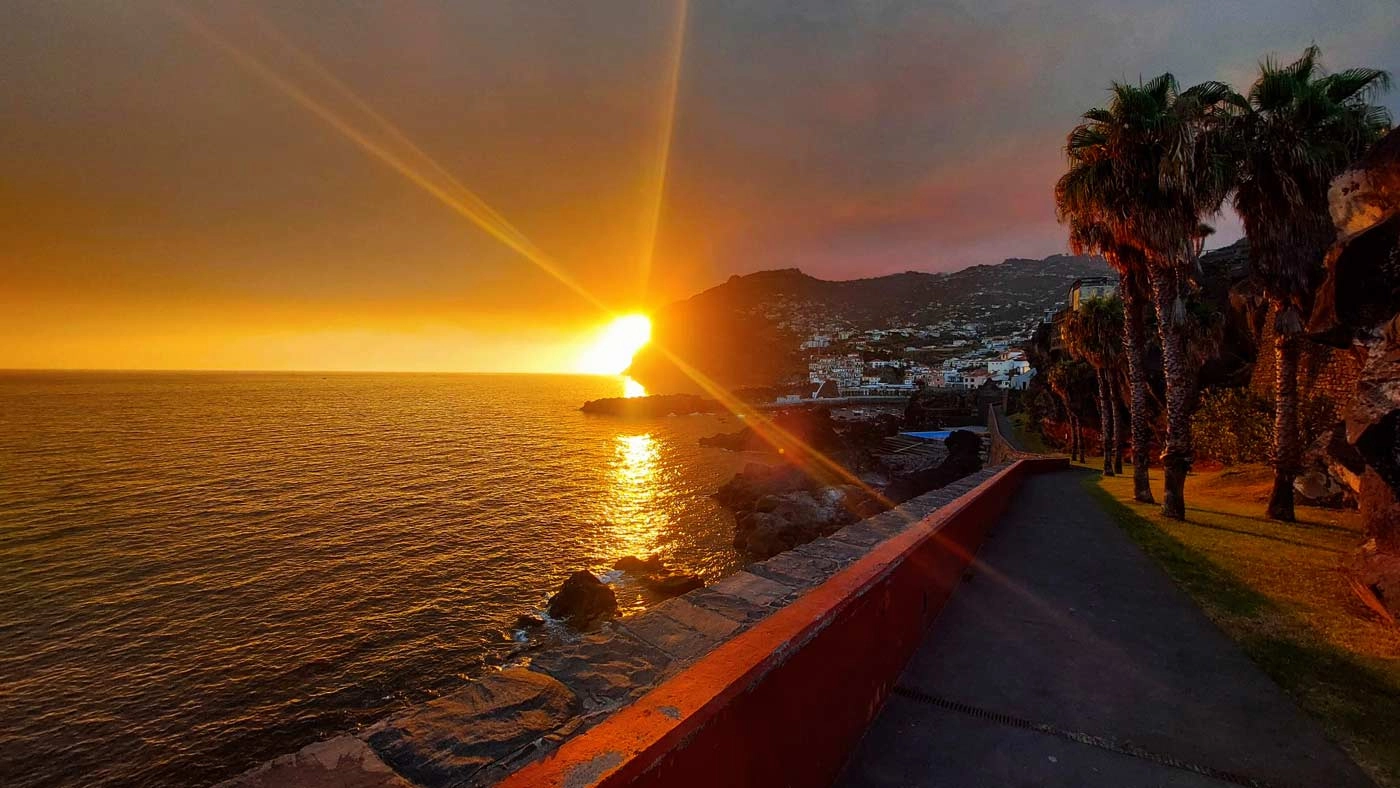A Hidden Village Born Out of the Need for Safety
Curral das Freiras, or the “Nun’s Valley,” or “Valley of the Nuns“ is one of the most curious and peaceful places on Madeira. Sheltered by towering mountains, this small village was not founded for farming or trade - but for safety. Its very existence is tied to pirates and fear, but also to resilience, peace and survival.
The Pirate Attack That Shaped Madeira
In 1566, French pirates lead by Bertrand de Montluc attacked Funchal, Madeira’s capital. Commanding a fleet of seven ships and around 1,200 men, Montluc landed under the cover of darkness and quickly overwhelmed local defenses.
Over three harrowing days, the pirates looted homes, desecrated churches, and set fire to large sections of the city. The French pirates seized valuable cargo, gold, and religious artifacts, taking advantage of the island's wealth, which had grown thanks to Madeira’s lucrative sugar trade.
The pirate’s impact was lasting: the convent suffered damage, the city’s morale was deeply shaken, and the Portuguese Crown responded by reinforcing Madeira’s coastal defenses.
Valley Refuge of the Nuns: The Birth of Curral das Freiras
Fearing for their lives, the nuns from the Santa Clara Convent fled into the mountains. They found protection in a deep, hidden valley that could not be seen from the sea. This place became their refuge - and gave the village its name (Curral: secluded valley; das Freiras: of the nuns)
However, the area had already seen people before the nuns arrived. It was used by shepherds and small groups of settlers in the late 15th century. The land, at first called Curral da Serra (“Mountain Corral”) and initially belonging to João Gonçalves Zarco, was gifted in 1462 and later passed to the nuns as part of a family dowry. Still, it wasn’t until the pirate attack that the valley became more than a distant pasture - the arrival of the nuns marked the start of its real historical significance.
Centuries-Long Life in Isolation
For centuries, Curral das Freiras was cut off from the outside world. It could only be reached by narrow trails, often walked by mule or on foot. The hard-to-reach terrain helped it stay safe, but it also made life simple and quiet. Over time, a small community formed. By 1790, the village became its own parish and counting roughly 110 inhabitants.
The people here lived close to nature. The steep land didn’t allow for large farms, but chestnuts and cherries grew well and became the village’s main crop. Today, agriculture remains very important to the local economy. Many families until today produce liqueurs and baked goods based on these ingredients.
A Story of Survival
The steep terrain and lack of proper infrastructure meant that residents had to adapt to survive. With little arable land, agriculture in the area was challenging. Residents have faced natural disasters like landslides and floods. The village’s isolation made rescue and aid difficult, but it also meant that people had to be resourceful, depending on their community to rebuild and recover after such events.
A Remote Gem That Grew Old
Year | Population | Difference |
|---|---|---|
1864 | 933 | — |
1878 | 1 162 | +24.5% |
1890 | 1 101 | −5.2% |
1900 | 1 215 | +10.4% |
1911 | 1 446 | +19.0% |
1920 | 1 476 | +2.1% |
1930 | 1 920 | +30.1% |
1940 | 2 168 | +12.9% |
1950 | 2 501 | +15.4% |
1960 | 2 556 | +2.2% |
1970 | 2 772 | +8.5% |
1981 | 2 388 | −13.9% |
1991 | 2 324 | −2.7% |
2001 | 1 673 | −28.0% |
2011 | 2 001 | +19.6% |
2021 | 1 580 | −21.0% |
Curral das Freiras’ Population Distribution by Age Groups | ||||
|---|---|---|---|---|
Year | 0-14 | 15-24 | 25-64 | > 65 |
2001 | 424 | 287 | 765 | 197 |
2011 | 362 | 300 | 1059 | 280 |
2021 | 159 | 201 | 913 | 307 |
Today, Curral das Freiras is still part of the Câmara de Lobos municipality, but its remote location gives it a unique spirit. The village has modern services like a school, library, and sports center, but it hasn’t lost its charm. Home to around only 1,600 people and spanning over 25 square kilometers, Curral das Freiras is the largest parish in the Câmara de Lobos municipality. Compared to a few decades ago, the population has gotten significantly older, with only 159 children of up to 14 years in 2021, compared to 424 in 2001.
Life Without Industry, but Lots of Agriculture
Curral das Freiras has no industrial activity. Most of its residents work in agriculture, especially in growing vegetables. However, the area is best known for its chestnuts, followed by sour cherries. In recent years, this has led to the small-scale production of traditional liqueurs made from these local ingredients.
Natural Remote Beauty All Around
The geography of Curral das Freiras is like a natural amphitheater. The valley sits inside what was once a volcanic crater, elevated little more than 600 meters above sea level and surrounded by dramatic peaks. From high viewpoints like Eira do Serrado, visitors can look down at the village far below and even take a steep hike to the village. The view is breathtaking - and it explains why the place was once considered the perfect hideout.
Many hiking trails pass through or begin here. You can take short paths to places like Poço dos Chefes (a small natural swimming area) or explore longer routes that once connected the north of the island to Funchal. These paths were once used by traders and farmers and are now popular with walkers and nature lovers.
How to get to Curral das Freiras by Bus?
Take Bus No 81 from Funchal. This is an interurban Service by Horarios de Funchal and different prices apply. Expect to pay about 4 euros per ride. The bus starts at Teleférico-Término (4A) in Funchal and the ride officially has 69 stops. However, the bus only stops if passengers want to get off or on. Expect the ride to Curral das Freiras to take about 45 minutes.
Why This Village Still Matters
Curral das Freiras is more than a scenic stop. It’s a place where history, nature, and culture meet. It was created out of fear, but it grew into a strong, self-sufficient community. Even today, the village feels different from other parts of Madeira - quieter, more traditional, more connected to the land. And while it was once a place to hide from pirates, it now welcomes visitors who want to discover a different side of the island - one that tells the story of escape, survival, and peace among the peaks.







Comments